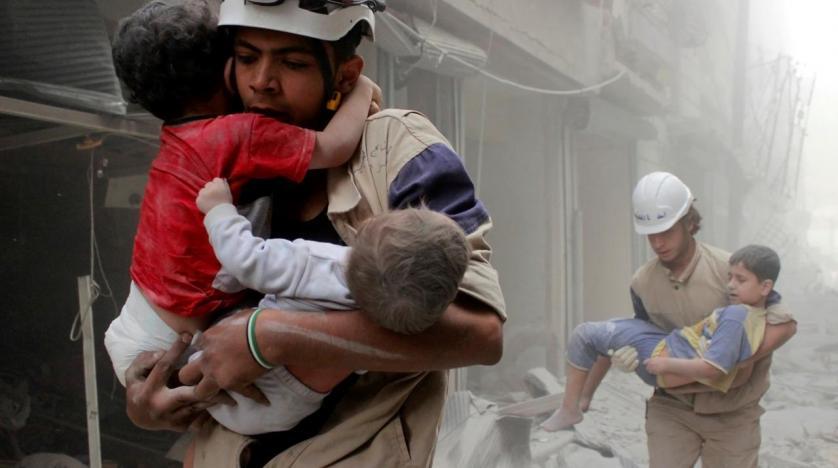A network of more than 20 conspiracy theorists, backed by a coordinated Russian campaign, sent thousands of disinformation tweets to distort the reality of the Syrian conflict and deter intervention by the international community, a new analysis revealed Sunday.
The analysis is based on data gathered by the Institute for Strategic Dialogue (ISD), which identified a network of social media accounts, individuals, outlets and organizations that disseminated disinformation about the Syrian conflict, with 1.8 million people following what they published.
ISD said the three principal false narratives promoted by the network of conspiracy theorists involved misrepresenting the White Helmets, the volunteer organization working to evacuate people in Syria.
The disinformation campaign also focused on the denial or distortion of facts about the Syrian regime’s use of chemical weapons and on attacking the findings of the world’s foremost chemical weapons watchdog.
“The White Helmets became a target of Russian ire after documenting incidents such as the chemical attack on Khan Sheikhoun in 2017, which killed 92 people, a third of them children,” the analysis said, adding that a UN unit later concluded there were “reasonable grounds to believe that Syrian forces dropped a bomb dispersing sarin” on the town in Idlib province.
ISD also found that official Russian government accounts played a key role in creating and spreading false content, with the Russian embassy to the UK and Syria playing a prominent role.
The Institute’s researchers identified 28 individuals, outlets, and organizations who have spread disinformation about the Syrian conflict.
Read Also: Western Countries Ask Syria to Cooperate on Chemical Weapons
It said that of the 47,000 disinformation tweets sent by the core of 28 conspiracy theorists over seven years from 2015 to 2021, 19,000 were original posts re-tweeted more than 671,000 times.
ISD then revealed that among those named in the report as an influential spreader of disinformation is Vanessa Beeley, a self-described independent journalist whose conspiracy theories have been cited as evidence by Russia at the UN security council.
In September 2015 Beeley accused White Helmets of being in league with Al-Qaeda and other terrorist organizations, claiming that the footage they gather as they rescue civilians from bombed-out buildings is staged.
Commenting on Beeley’s accusations, Farouq Habib, White Helmets deputy manager, said: “At first, we really thought this could just be someone who didn’t have enough correct info, and we should contact her to explain. But then, with some research, we realized it’s deliberate and systematic.”
The analysis also revealed a group of British academics accused of spreading pro-Syrian regime disinformation and conspiracy theories promoted by Russia.
It then listed Canadian independent journalist Eva Bartlett who appeared on a Syrian government panel at the UN, alleging that the White Helmets stage rescues. One version of the talk has been viewed 4.5m times on Facebook.
The analysis said that White Helmets volunteers are the most frequently attacked targets, with more than 21,000 tweets designed to discredit the group or encourage attacks against their first responders.
So far, 296 volunteers have been killed in the line of duty since 2012.
Lina Sergie Attar, a Syrian activist, founder, and chief executive of Karam Foundation, said: “It’s insulting that a group of western conspiracy theorists think they hold a higher moral standard but just spread their lies.”
According to The Syria Campaign, this barrage of disinformation has been to sow confusion and doubt among government policymakers, helping create anti-asylum policies, normalize Syria’s Assad regime and emboldening Russian president Vladimir Putin to replicate the tactics in Ukraine.
A former U.S. Department of State official told researchers, “Syria was a testing ground for this type of disinformation activity, and the lessons learned from this case can inform action on Ukraine and beyond.”
The Syrian Observer has not verified the content of this story. Responsibility for the information and views set out in this article lies entirely with the author.


